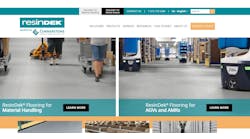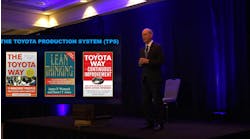A Shift Is Underway in Electronics Manufacturing
Having largely operated in the shadows of its more famous brand-name clients, the $500 billion electronics manufacturing services (EMS) sector now stands at the vanguard of a sweeping transformation.
A shift is underway in how brands and original equipment manufacturers (OEMs) engage their EMS providers. Long seen as an outsourced production workhorse, EMS players are increasingly viewed as strategic partners that can help their clients drive resilience, innovation, speed to market and sustainability.
As businesses confront more complex challenges that they cannot solve alone, the industry has effectively become a platform of diverse capabilities to enable its clients to navigate a rapidly changing and hyper-competitive world. Never before has this partnership been so critical in the aftermath of the COVID-19 pandemic, which has sparked reinvention and new ways of working.
De-Risking the Supply Chain
COVID-19 has hastened the evolving dynamics in an industry that has largely worked behind the scenes since its inception more than half a century ago. As the pandemic disrupted supply networks, manufacturers have been thrust into wide-ranging conversations about how to shore up supply chain resilience and manufacturing competitiveness. As the EMS industry was built on printed circuit boards (PCBs)—the lifeblood of every electronic device—today’s top-tier EMS players are evolving to provide enabling platforms designed to serve today’s rapid innovation cycles and sustainability mandates.
Well before today’s component shortages and logistical logjams, numerous businesses were exploring ways to de-risk their supply chains amid tariff and trade disputes between the United States, China and other countries. Those facing increased risk included information and communications equipment providers, as technology trade restrictions threatened their business continuity.
One solution sought to reduce risk by establishing duplicate manufacturing hubs outside of Asia. To do this, OEMs leveraged the scale, global footprint and in-market knowledge of their manufacturing partners with long operating histories and well-established strategic supplier relationships in other regions.
Since then, the shift towards regionalized manufacturing has found greater traction, with proximity to end customers a key factor that shortens the supply network and reduces business continuity risks.
Competitive Pressures
Our globalized world has not only raised trade and supply chain risks but also competitive pressures. Today, innovative businesses are setting the pace of competition while defining the market’s roadmap. Investments in supply chains and technologies by top retailers, for instance, have set new standards for delivery times, while innovations in the electric vehicle space have primed consumer expectations for affordable, high-performing electric vehicles (EVs).
To respond to these and other rapidly evolving dynamics, companies are tapping their EMS providers’ global scale and capabilities that extend well beyond sourcing and production. Manufacturing partners, for instance, are investing in end-to-end supply chains for faster times to market. As products roll off the lines, additional distribution points are removed so manufacturers can bring products directly to the end consumer through last-mile delivery.
Indeed, OEMs are increasingly collaborating with their manufacturing partners across the product lifecycle, from design and engineering to post-sales and end-of-life. At the core of these collaborations is an enabling platform that helps OEMs scale their innovations and bring them to market faster. Today’s devices made for any application –consumer, medical, industrial or enterprise—are getting smarter and more complex. Within a single unit, they combine software and highly integrated electronic systems that deliver many functionalities.
A Smarter World
To produce a smartphone requires parts from more than 200 primary suppliers, to say nothing of how many suppliers are ultimately involved. Rather than merely housing 100+ electronic boxes that deliver discrete functionalities, automobiles have transformed into powerful computing platforms that can be easily updated over the air thanks to cloud computing, AI, sensors and automation. Even ordinary wares such as home appliances can sense the environment to optimize performance and respond to touch and voice commands.
In this world filled with intelligent devices, manufacturers must deliver the technology building blocks that enable their OEM clients to rapidly develop the applications, processes and other solutions that are built into their end products. Examples of these buildings blocks span the gamut: from human machine interface (HMI) with displays, buttons and lighting integrated into home appliances to autonomous valet parking systems deployed in driverless vehicles. These core enablers not only help accelerate product development cycles but also production, as they are pretested and ready to be configured and integrated in final assembly.
Sustainability Goals
As manufacturing partners race to help OEMs innovate faster, they are also absorbing heightened expectations to operate sustainably, and consequently playing an increasingly critical role in enhancing their clients’ ESG record.
From how they treat employees to their greenhouse gas (GHG) emission targets, contract manufacturers are under greater scrutiny from clients to account for their operations’ environmental and social impact. This comes as regulators around the world are soon expected to require companies to provide climate-risk information.
For brands and OEMs that have migrated their production processes entirely to their partners, the vast majority—estimated between 65 to 95%—of their greenhouse gas emissions are classified as scope 3. While this class of emissions is attributable to a company’s products, they are outside of its direct operational control and hence difficult to measure. This hasn’t unnerved leading brands of the world from pledging net zero emissions, a commitment that accounts for scope 3 emissions. To achieve net zero will require transformative product innovation and deep partnerships with contract manufacturers and other suppliers.
As for manufacturers, some are setting ambitious sustainability goals while others are lagging. According to our analysis of 43 companies that are among the top suppliers to six global OEMs, only five have committed to Science Based Targets initiative (SBTi), a consortium that provides scientific guidance on setting GHG emission reduction targets.
To be sure, creating an ecosystem with ample investments and expertise to set and reach pioneering sustainability targets is no easy feat. Nonetheless, manufacturers have both a significant business opportunity and a responsibility to help clients meet their sustainability ambitions and would do well to bolster their investments to that end.
Rise of the Circular Economy
The good news for sustainability is that brands and OEMs are investing more in after-sales and end-of-life services, opening the potential to extend the useful life of their products. Today, an emerging approach towards environmental sustainability known as circular economy (CE) is gaining ground. With a goal to minimizing resource consumption and waste, CE’s calculus folds in sustainable product design and consumption. Performance and durability should be optimized during design to extend a product’s useful life with a viable pathway for the part’s reuse or recycling at end of life.
Beyond choosing sustainable materials where possible, engineering for modularity should also be a consideration so that parts can be easily disassembled and shipped for reuse. As companies increasingly embrace CE and invest in trade-in and recycling programs, manufacturing partners are well-positioned to support product refurbishment and reuse, building on their current infrastructure supporting their clients’ post-sale services like repairs and exchanges. Incidentally, contract manufacturers can more seamlessly support aftermarket and CE services when manufacturing is regionalized. Instead of shipping repairs halfway around the world to the factory where the products were built, supporting them in-region faces lower logistical hurdles and costs.
Through the decades, the EMS industry has constantly adapted, evolving from being a second-source printed board manufacturer to now providing critical and enabling infrastructure for designing, building and supporting the products of its customers—and increasingly as a proxy for their sustainability performance.
As the role of the EMS industry continues to evolve, this journey offers a prism through which the intensity of competition can be viewed as new models are adopted to serve speed and innovation. The COVID-19 pandemic has heightened the business imperative for collaboration, agility and resilience, and accordingly, commercial success will require new ways of working.
As COVID-19 has also spawned hope with new solutions to systemic problems, these pivots towards regionalization and sustainability can restore balance between national and international interests and between growth, inclusivity and environmental preservation.
Revathi Advaithi is CEO of Flex.




